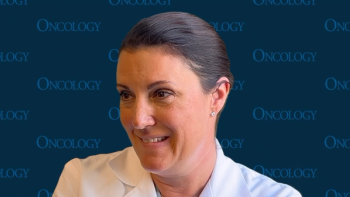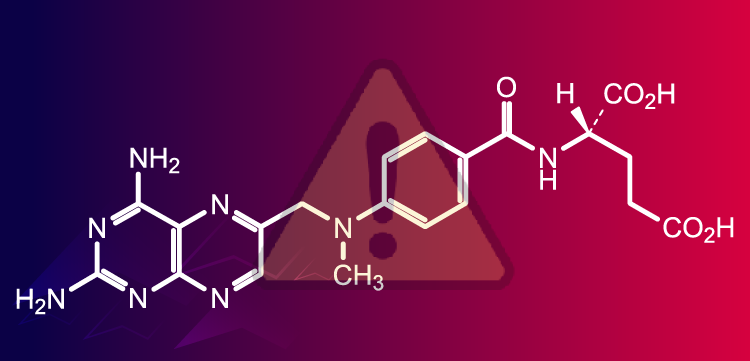
Landmark Radioligand Therapy Approval Bridges Treatment Gap in mCRPC

Administering 177Lu for mCRPC is a “team sport”, according to Steven Finkelstein, MD, DABR, FACRO.
In March 2025, the
Six days after this approval, Steven Finkelstein, MD, DABR, FACRO, dosed the first patient in the US with 177Lu.2 This is an important step forward in the mCRPC space as it identified the bridging of a gap where patients can now receive this treatment prior to chemotherapy.
Finkelstein, national director of Radiation Oncology at US Urology Partners, director of the Center of Advanced Radiation Excellence, and director of Radiation Oncology Research at Associated Medical Professionals in Syracuse, NY, highlighted specific topline data from the phase 3 PSMAfore trial (NCT04689828).3 The median radiographic progression-free survival was 9.3 months (95% CI, 6.77-not estimable) in the experimental arm vs 5.55 months (95% CI, 4.04-5.95) with ARPI therapy (HR, 0.41; 95% CI, 0.29-0.56; P <.0001).
Additionally, Finkelstein highlighted the tolerable safety profile, along with noting how the recent approval will allow for more patients to be eligible to receive treatment.
Are you able to briefly discuss the recent approval of lutetium Lu 177, and the impact it has on patients with mCRPC?
Finkelstein: On March 28, 2025, the FDA approved [177Lu] in the chemotherapy-naive mCRPC space. This was because of the seminal phase 3 PSMAfore trial. In this study, [177Lu] reduced the risk of radiographic progression or death by 59% with an HR of 0.41 [95% CI, 0.29-0.56; P <.0001] compared with a change in an ARPI in patients with PSMA-positive, mCRPC after treatment with ARPI therapy. In the updated exploratory analysis, [177Lu] more than doubled the median radiographic progression-free survival of 11.6 months as compared with 5.59 months. With this again, the FDA approved [lutetium Lu 177] in the chemotherapy-naive mCRPC space, allowing patients like mine to finally get [177Lu] prior to chemotherapy. A patient of mine had been waiting patiently, hoping that this approval would happen so that he could receive on-label, commercially available radiopharmaceuticals.
Six days after the approval, you were able to administer the treatment to 1 of your patients who was the first in the US to receive it. How did you decide to go about this and why is this so important?
Finkelstein: This was a patient who had seen multiple therapies. He was reticent about starting chemotherapy, although he had a medical oncologist who suggested not to get chemotherapy and referred the patient to me previously so that he could be considered for [177Lu]. When I saw him, I told him, unfortunately, it wasn’t available. The FDA had not yet approved it. Then on March 28, 2025, with the FDA approval, we called the patient and said, “This is rational and reasonable, and we’re able to order the dose about 30 minutes after the FDA approval.” That dose came a few days later, and we were able to dose the patient within 6 days of the FDA approval. As you can imagine, he was quite excited, and again, was pleased that he could be the first person to receive [177Lu] in the chemotherapy-naïve mCRPC space, as the first on-label commercial patient.
Did you encounter any barriers with insurance when trying to use it so quickly after the FDA approval?
Finkelstein: We didn’t experience any barriers. We found the process of speaking with the appropriate [people] who ordered the dose within the context of Novartis to be very reasonable. As you can imagine, this was new for them and new for us, but that whole process was seamless. The dose got to us within 3 business days, and then we were able to dose him at a convenient time for the patient on the sixth day. The patient was ecstatic that he could have availability for a potentially life-saving therapy.
What is the adverse effect (AE) profile of this agent? Has there been an increase in AEs observed when administered before chemotherapy?
Finkelstein: We’ve been in contact with the patient, and the patient has not experienced any AEs and has had a favorable safety profile. The findings from the PSMAfore study that led to the approval demonstrated a consistent and favorable safety profile, with the most frequently reported all-grade AEs for [177Lu] being dry mouth [27%], fatigue [23%], nausea [32%], and constipation [22%]. [177Lu], in that seminal trial, did not impair the ability of patients to be subsequently treated with chemotherapy.
What are the next steps to be taken with this agent?
Finkelstein: There are 3 key points. We have to understand that approximately half of patients with mCRPC do not live long enough to receive a second treatment, highlighting the need for earlier use of effective therapies with demonstrated tolerability. [177Lu] significantly reduced the risk of progression or death by 59% in the seminal trial, and more than doubled the median radiographic progression-free survival vs a change in ARPI. This is from the seminal phase 3 PSMAfore trial. My last key point is this new indication approximately triples the eligible patient population, allowing [177Lu] to be used after 1 ARPI and, now, before chemotherapy. It’s an exciting time, and that’s going to create a tidal wave of interest in radiopharmaceuticals as well as theranostic-based therapies.
What message would you like your colleagues to take away from this conversation?
Finkelstein: My colleagues in radiation oncology and other specialties should understand that radiopharmaceuticals are an extremely exciting new development in our field, and as we look forward to helping our patients and advance the care of outcomes in our patients, radiopharmaceuticals and [radioligand therapy] will probably be moved upstream, and [177Lu] is an important step in that process.
Is there anything else you would like to add?
Finkelstein: I want to highlight that the ability to give [177Lu] is a multidisciplinary team sport. As a radiation oncologist working closely with urologists, medical oncologists, and nuclear medicine physicians, this is an important team sport that allows all of us to work together to help achieve the best outcomes for our patients. Radiation oncology is an important piece of that, but I also think it’s very important that other physicians across specialties get excited and interested in the radiopharmaceuticals to come.
References
- FDA expands Pluvicto’s metastatic castration-resistant prostate cancer indication. News release. FDA. March 28, 2025. Accessed March 28, 2025. https://tinyurl.com/y77tmenc
- CNY man is first patient in US to receive new prostate cancer treatment in pre-chemotherapy setting. News release. LocalSYR.com. https://tinyurl.com/mscphtyj
- Morris MJ, Castellano D, Herrmann K, et al. 177Lu-PSMA-617 versus a change of androgen receptor pathway inhibitor therapy for taxane-naive patients with progressive metastatic castration-resistant prostate cancer (PSMAfore): a phase 3, randomised, controlled trial. Lancet. 2024;404(10459):1227-1239. doi:10.1016/S0140-6736(24)01653-2. Published correction appears in Lancet. 2025 Dec 21;404(10471):2542. doi: 10.1016/S0140-6736(24)02716-8
Newsletter
Stay up to date on recent advances in the multidisciplinary approach to cancer.


















































































